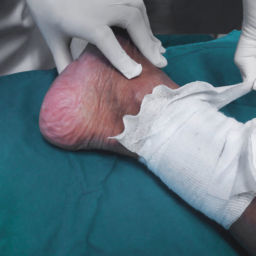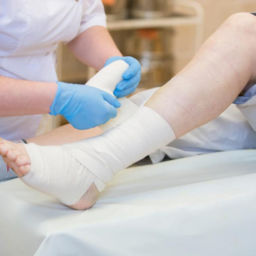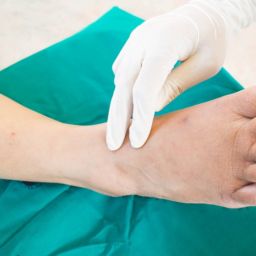
What is negative pressure wound therapy?
Negative Pressure Wound Therapy (NPWT) is a medical technique used to promote wound healing. It involves applying controlled negative pressure (suction) to a wound through a specialized dressing and sealed system. This therapy helps in several ways: it removes excess fluid, reduces swelling, and enhances blood flow to the wound area, which can aid in tissue regeneration. NPWT is particularly beneficial for chronic or complex wounds, diabetic ulcers, and post-surgical incisions. The controlled vacuum created by NPWT assists in reducing bacterial contamination, speeding up the healing process, and promoting healthy tissue formation. It’s often utilized under the guidance of medical professionals for optimal wound care treatment.
How does negative pressure wound therapy work?
Negative Pressure Wound Therapy (NPWT) is a medical technique that utilizes controlled suction to accelerate wound healing and promote tissue regeneration. The process involves the application of a specialized dressing to the wound site, creating an airtight seal. A connected vacuum pump then creates a controlled negative pressure within the dressing, which exerts a pulling force on the wound area.
This pulling force serves several purposes:
- Removal of Excess Fluid: The negative pressure helps to draw out excess fluid, blood, and other wound exudates. This reduces swelling and minimizes the risk of infection by clearing away debris and bacteria.
- Enhanced Blood Flow: NPWT promotes improved blood circulation around the wound area. This increased blood flow delivers essential nutrients, oxygen, and immune cells that are crucial for tissue repair and growth.
- Tissue Contraction: The negative pressure can cause gentle contraction of the wound edges, aiding in wound closure and reducing the wound’s overall size.
- Stimulation of Granulation Tissue: The controlled suction encourages the formation of granulation tissue – the new connective tissue that supports wound healing.
- Reduced Bacterial Load: By removing excess fluid and promoting a healthier wound environment, NPWT helps to decrease the bacterial load within the wound, reducing the risk of infection.
- Increased Healing Factors: The mechanical stress applied by the negative pressure can trigger the release of growth factors that promote cellular activity and tissue regeneration.
NPWT is particularly useful for chronic wounds, diabetic ulcers, pressure ulcers, and post-surgical wounds that are slow to heal. It should be administered under the guidance of medical professionals who can assess the wound’s progress and make adjustments to the therapy as needed.
What are the Benefits of Negative Pressure Wound Therapy?
Negative Pressure Wound Therapy (NPWT) offers several benefits in the field of wound care and management:
- Enhanced Wound Healing: NPWT promotes faster wound healing by increasing blood flow, oxygen delivery, and nutrient supply to the wound area, which is essential for tissue regeneration.
- Reduced Infection Risk: The removal of excess fluid and debris, along with the creation of a controlled wound environment, helps lower the risk of infection by minimizing bacterial colonization.
- Management of Exudate: NPWT efficiently removes excess wound exudate, reducing the risk of maceration (softening of skin due to prolonged exposure to moisture).
- Stimulation of Granulation Tissue: The therapy encourages the formation of granulation tissue, which is crucial for wound healing as it provides a scaffold for new tissue growth.
- Closure of Wound Edges: NPWT can gently bring together wound edges, facilitating wound closure and reducing wound size.
- Pain Management: By reducing pressure on nerve endings and creating a stable wound environment, NPWT can alleviate pain associated with some chronic wounds.
- Minimized Scarring: Proper wound healing through NPWT can result in less noticeable scarring and better aesthetic outcomes.
- Broad Applicability: NPWT can be used for a variety of wound types, including diabetic ulcers, pressure ulcers, surgical wounds, traumatic wounds, and more.
- Versatility: NPWT can be customized and adjusted based on wound characteristics and healing progress, allowing for individualized treatment plans.
- Patient Comfort: By promoting quicker healing and reducing pain associated with chronic wounds, NPWT can significantly improve a patient’s overall comfort and quality of life.
It’s important to note that NPWT should be administered under the supervision of healthcare professionals who are experienced in wound care. The benefits of NPWT can vary depending on the specific wound, patient’s overall health, and adherence to the treatment plan.
Why should you visit a podiatrist for Negative Pressure Wound Therapy?
Visiting a podiatrist for Negative Pressure Wound Therapy (NPWT) offers several advantages due to their specialized expertise in foot and ankle health: Podiatrists are experts in treating foot and lower limb conditions. They understand the unique challenges and complexities of wounds in these areas, ensuring tailored NPWT treatment. It is essential to accurately assess the wound’s severity, location, and underlying factors, which is crucial for determining the appropriate NPWT protocol.
Further, getting a customized treatment plan based on your foot anatomy, mobility needs, and any underlying medical conditions could truly impact wound healing.
Make an appointment at Certified Foot and Ankle Specialists, where our podiatrists are trained in applying NPWT dressings accurately to ensure optimal wound coverage, suction, and a secure seal. This reduces the risk of complications and maximizes treatment efficacy. They are able to closely monitor the wound’s progress and make necessary adjustments to the NPWT parameters, ensuring the therapy evolves with the changing wound characteristics.
Comprehensive care is key. Beyond NPWT, our podiatrists can address any related foot concerns or complications, such as infection, pressure redistribution, and proper footwear recommendations. Most importantly, they are able to provide long-term wound management strategies.
Actively participate in your healing journey! Choose a podiatrist that will allow you to benefit from specialized foot care, wound healing and overall foot well-being.



